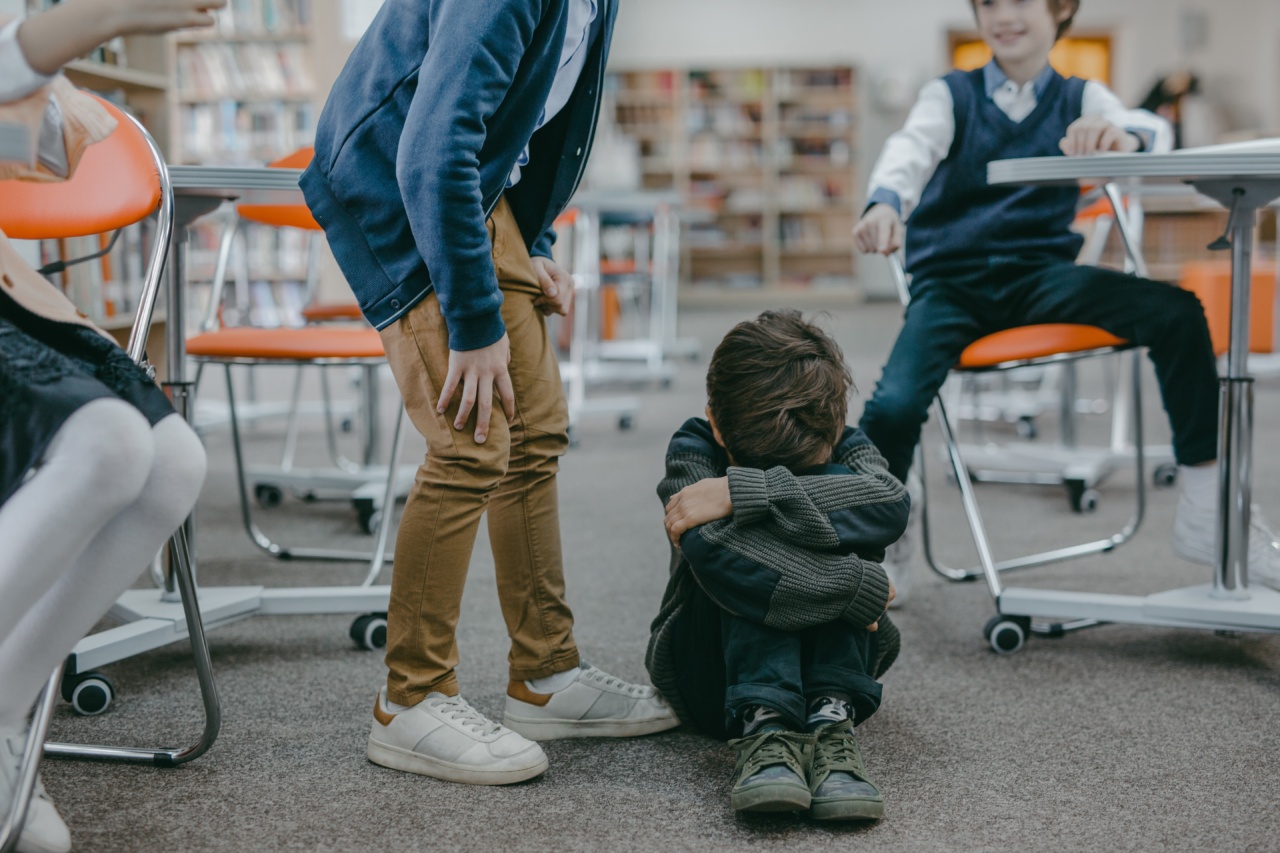Bullying is a prevalent issue that affects many children and can have long-lasting effects on their physical and mental well-being. As a parent, it is crucial to be vigilant and knowledgeable about the signs of bullying in your child.
By staying informed, you can take proactive steps to address the situation and support your child through this challenging experience.
What is Bullying?
Bullying refers to repeated aggressive behavior that is intentional and involves an imbalance of power. It can manifest in various forms, including physical, verbal, or psychological harm.
Bullying can occur at school, on social media platforms, in neighborhoods, or even within families.
The Effects of Bullying on Children
Bullying can have severe consequences for children’s emotional and physical well-being. Some common effects include:.
- Emotional Distress: Victims of bullying often experience anxiety, depression, low self-esteem, and social withdrawal.
- Academic Problems: Bullying can disrupt a child’s concentration, leading to poor academic performance and a decline in their interest in school.
- Physical Symptoms: Children who are bullied may experience frequent headaches, stomachaches, trouble sleeping, or other psychosomatic complaints.
- Social Isolation: Bullied children may have difficulty forming and maintaining positive relationships, which can lead to feelings of loneliness and isolation.
- Risk of Self-Harm or Suicide: In some extreme cases, victims of bullying may contemplate self-harm or suicide as a result of the relentless harassment they endure.
Spotting Signs of Bullying
Identifying signs of bullying can be challenging, as children may be hesitant to discuss their experiences. However, by paying attention to subtle changes in their behavior, you can uncover possible signs of bullying. Look for the following:.
1. Emotional Changes
If your child becomes noticeably moody, anxious, or depressed, it could be a sign that they are experiencing bullying. Monitor their emotions and be supportive in creating a safe space for open communication.
2. Physical Symptoms
Frequent complaints of headaches, stomachaches, or unexplained injuries could indicate that your child is being physically bullied. If these symptoms persist, it’s important to take them seriously and investigate further.
3. Decline in Academic Performance
A sudden drop in grades, lack of interest in schoolwork, or a general decline in academic performance may suggest that your child is struggling due to bullying. Reach out to teachers or school counselors to gather more information.
4. Changes in Social Behavior
Noticeable changes in your child’s social interactions, such as a sudden loss of friends, avoidance of social situations, or spending excessive time alone, might indicate that they are experiencing bullying.
Encourage open discussions about their social experiences.
5. Unexplained Loss or Damage of Possessions
If your child frequently loses personal belongings or comes home with damaged items, it could be a sign of bullying. Pay attention to any unusual changes in their belongings and gently inquire about incidents that may have occurred.
6. Increased Internet or Phone Usage
In this digital age, cyberbullying is a significant concern.
If your child is spending excessive time online, becomes upset after using their phone or computer, or exhibits signs of distress when receiving notifications, cyberbullying could be occurring.
7. Changes in Eating or Sleeping Habits
Bullying can cause stress and anxiety, leading to changes in eating or sleeping patterns. Monitor your child’s eating habits and sleep routine. Unexplained weight loss or gain, as well as insomnia or nightmares, may be indications of bullying.
8. Avoidance of School or School-Related Activities
If your child begins to avoid school or shows reluctance to participate in extracurricular activities they previously enjoyed, it is essential to explore the underlying reasons. Bullying may be causing their aversion.
9. Regression in Development
Children who experience bullying may regress in their development. Look for signs such as bedwetting, thumb-sucking, or clingy behavior that are inconsistent with their age.
10. Unusual Behavior After Social Interactions
If your child exhibits sudden changes in behavior or appears visibly upset after spending time with specific individuals, it could indicate that they have been mistreated or bullied by those individuals.
Supporting Your Child
If you suspect that your child is being bullied, it is crucial to take immediate action to provide them with the necessary support and assistance. Here are a few steps you can take:.
1. Open Communication
Create an open and supportive environment where your child feels comfortable talking about their experiences. Encourage them to express their feelings and actively listen without judgment.
2. Validate Their Feelings
Acknowledge their emotions and assure them that what they are going through is not their fault. Reassure them that you are there to support and help them overcome this difficult situation.
3. Gather Information
Collect as much information as possible about the bullying incidents from your child. Ask them to provide details about the individuals involved, locations, and specific incidents that have occurred.
4. Contact the School
Reach out to the school administration, teachers, or counselors to report the bullying incidents and request their immediate intervention. Provide them with the information you have gathered and work together to develop a plan to address the situation.
5. Encourage Healthy Coping Strategies
Teach your child healthy coping mechanisms to deal with the stress and emotions caused by bullying. Encourage them to engage in activities they enjoy, spend time with supportive friends, and practice relaxation techniques.
6. Seek Professional Help if Needed
If your child’s well-being continues to be affected, it may be beneficial to seek the assistance of a mental health professional who specializes in working with children.
They can provide additional support and help both you and your child navigate through the challenges of bullying.
7. Monitor Online Activity
If cyberbullying is suspected, monitor your child’s online activity and consider setting up parental controls or blocking certain websites or social media platforms. Encourage them to report any cyberbullying incidents to you or a trusted adult.
8. Work on Building Resilience
Support your child in developing resilience by fostering their self-esteem, teaching them problem-solving skills, and helping them build a strong support network. Resilient children are better equipped to handle the challenges that come their way.
9. Stay Involved
Continue to stay involved in your child’s social and academic life. Attend school meetings, engage with their teachers, and keep lines of communication open with school staff to ensure that the bullying is effectively addressed.
10. Teach Empathy and Kindness
Encourage empathy and kindness in your child’s behavior by teaching them the importance of respecting others and standing up against bullying. Help them understand the impact their words and actions can have on others.
Conclusion
Bullying can have a detrimental effect on children and their overall well-being. As parents, it is essential to be proactive in spotting the signs of bullying and taking immediate action to support and protect our children.
By maintaining open communication, seeking assistance if needed, and teaching resilience and empathy, we can empower our children to overcome bullying and foster a safe and inclusive environment for all.


























